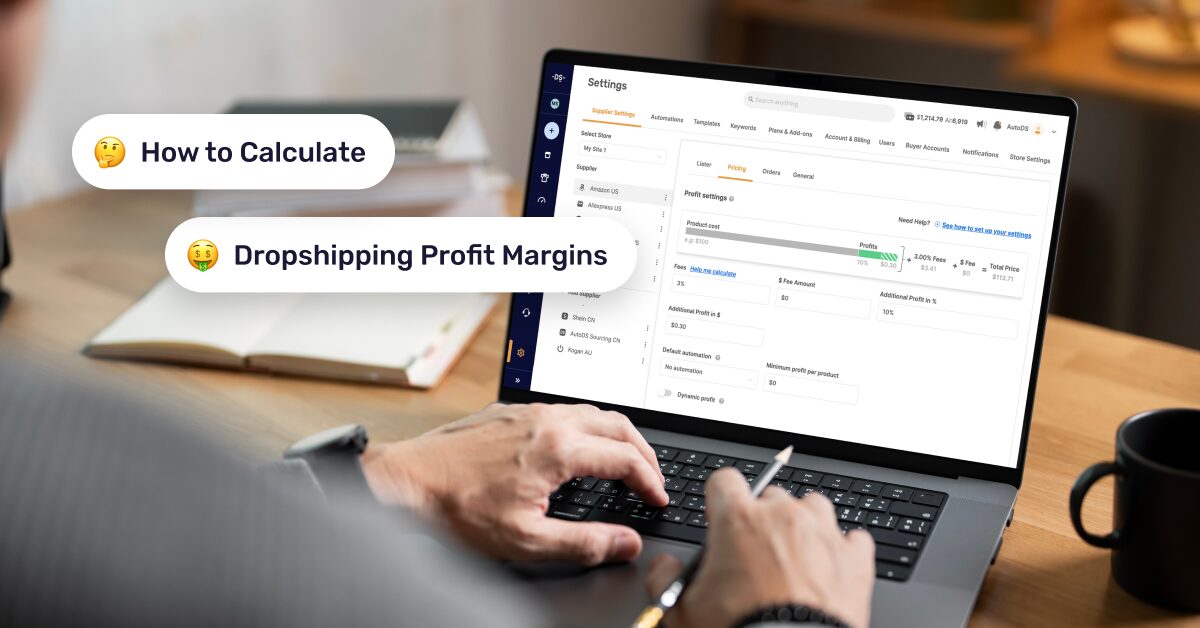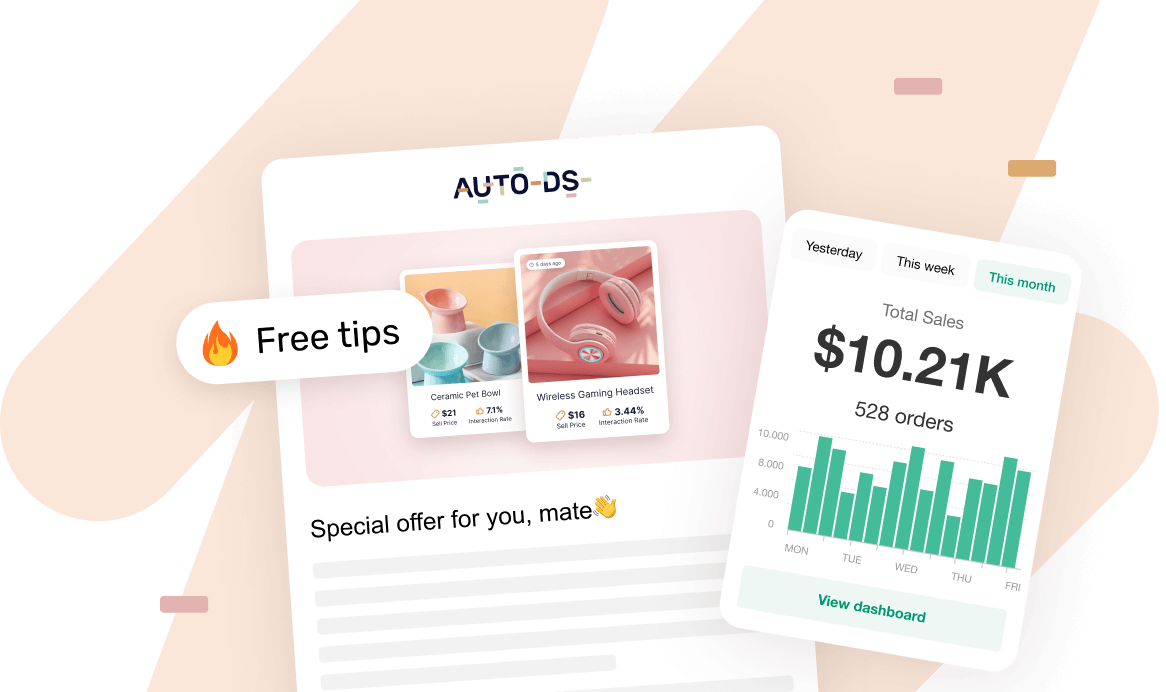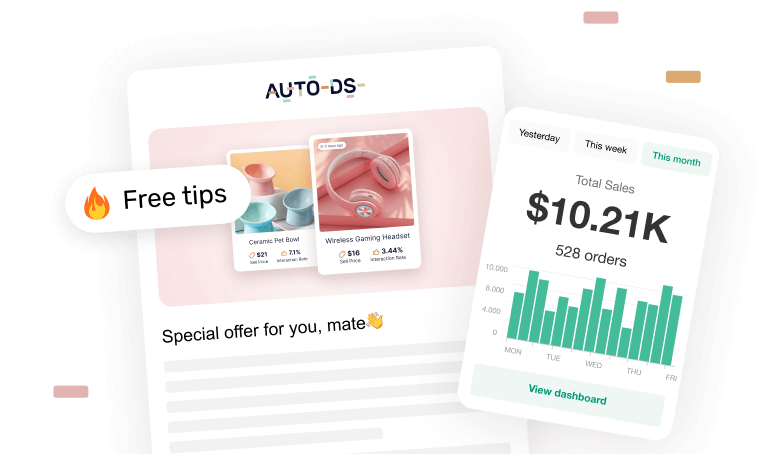How to Calculate Dropshipping Profit Margins in 2025
Making $10,000 in sales sounds exciting—until you realize $9,500 went to supplier costs, ads, and fees. That’s why calculating your dropshipping profit margin is more than a financial chore; it’s your survival strategy. Without a clear margin, you’re flying blind; maybe breaking even, maybe losing money, maybe scaling a leaky bucket.
This guide is here to change that. We’ll break down every cost type (from product sourcing to platform fees), show you how to calculate both gross and net profit margins with examples, and explain how to set pricing structures that actually protect your bottom line. And because math isn’t everyone’s love language, we’ll also show you how AutoDS takes the guesswork out with automated tracking, so you always know if a product is truly profitable.
Profit margins matter more than revenue as they reveal if your store is truly sustainable.
Always include all costs: product, shipping, ads, platform fees, and subscriptions.
Good dropshipping net margins usually fall between 10% and 30% in 2025.
AutoDS provides automated profit tracking and dynamic pricing, protecting your margins in real time.
What Is Profit Margin in Dropshipping?
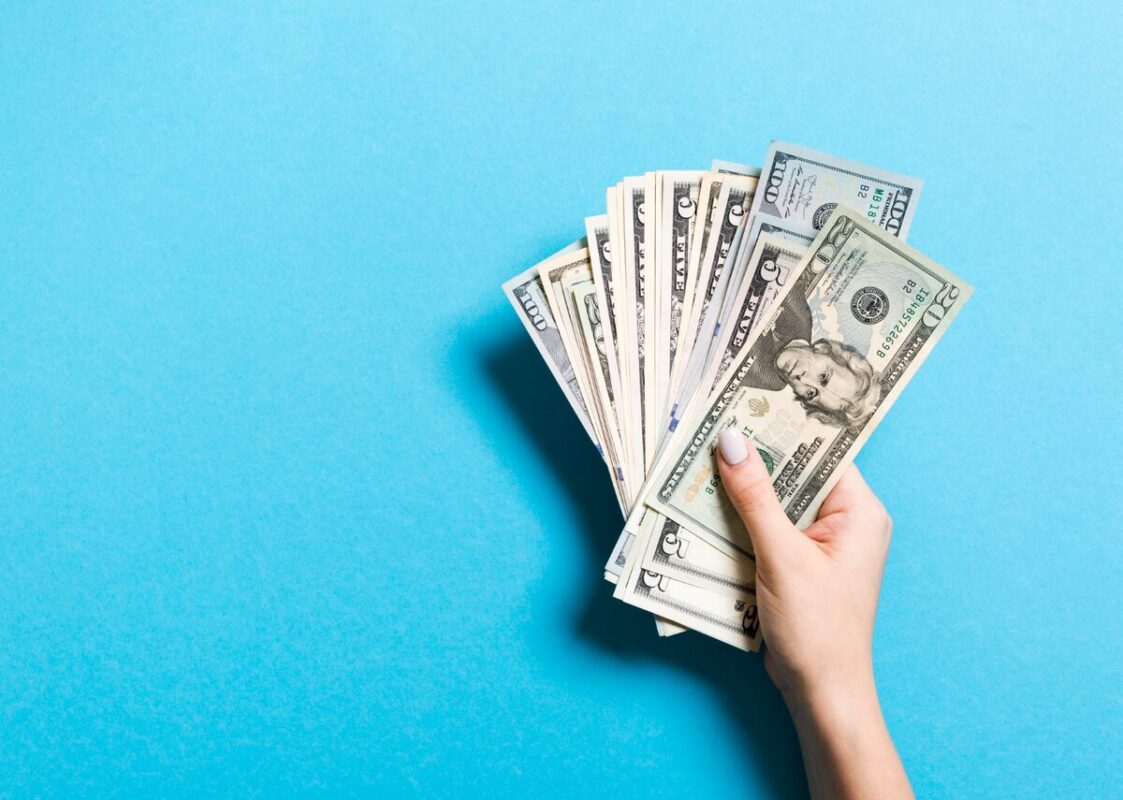
Profit margin is the percentage of revenue you keep after covering costs. In dropshipping, it’s crucial because your expenses go beyond just product price: you’ve got transaction fees, shipping, ad spend, and even currency conversions creeping in.
There are two types of profit margins you should track:
- Gross Profit Margin: Shows how much you keep after paying for the product itself.
- Net Profit Margin: Shows how much you actually keep after all expenses (ads, subscriptions, shipping, payment fees, etc.).
Here’s the universal formula:
Profit Margin = (Income – Expenses) ÷ Income × 100
Let’s put it into practice:
- You sell a product for $50.
- The supplier charges you $20.
- You spend $15 on Facebook ads.
- Platform and payment fees take another $5.
That leaves $10 profit.
Now apply the formula:
($50 – $40) ÷ $50 × 100 = 20% profit margin.
That 20% tells you whether scaling ads or increasing prices makes sense or whether you’re just spinning wheels. AutoDS gives dropshippers real-time margin tracking across all their selling platforms, so they can see numbers like these without touching a spreadsheet.
📦 Supplier’s Tip: Always ask your supplier for the final landed cost (product + shipping + duties) before setting a price. Surprises here kill margins fast.
Dropshipping Profit Margins: The Full Cost Breakdown
When we talk profit margins, we’re not just talking about the product price. Dropshipping has a long list of “hidden” costs that can eat into your profits if you’re not careful. Let’s unpack them one by one so you can see exactly where your money goes.
Turn your store into a profit-first machine. Start your $1 AutoDS trial today.
1. Platform Setup & Monthly Fees
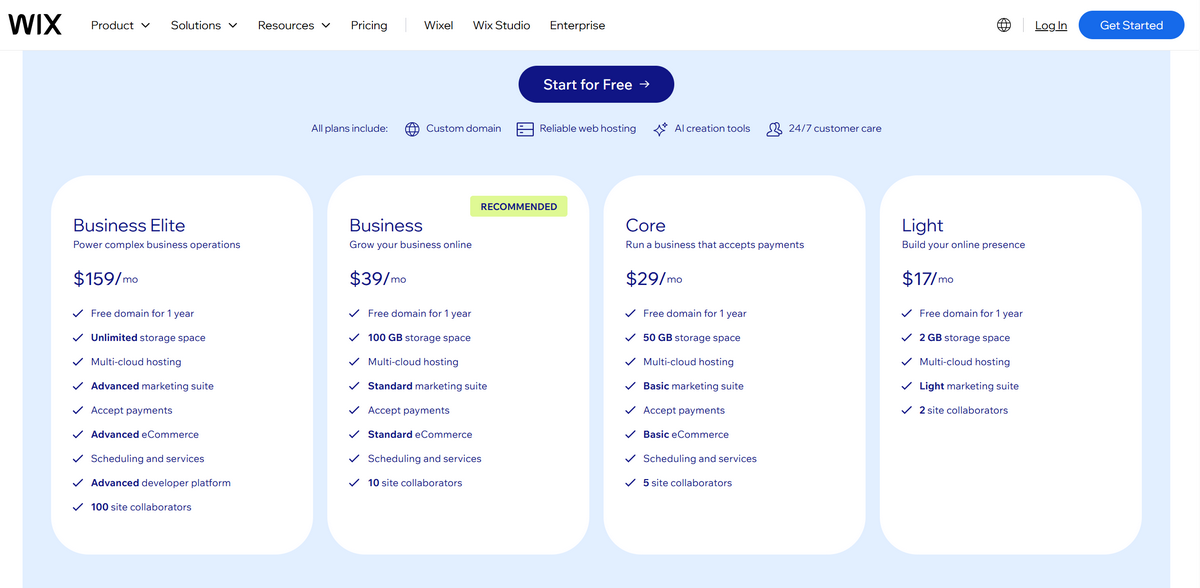
Running a store isn’t free. Most selling platforms and website builders charge monthly or annual subscriptions:
- Shopify: $29/month for the basic plan, up to $399 for advanced.
- Wix: Starts around $17/month for e-commerce.
- eBay: Optional store subscriptions range from $4.95/month (Starter) to $299.95/month (Anchor).
These aren’t just overhead; they’re the baseline cost of doing business. AutoDS’ multi-platform integration helps you connect Shopify, eBay, Wix, Etsy, and more under one account without paying extra for different dashboards. Oh, and remember you should always include platform fees in your cost structure before testing ads. Otherwise, you’ll think you’re profitable until the billing cycle hits.
2. Listing, Selling, International Fees & Payment Charges
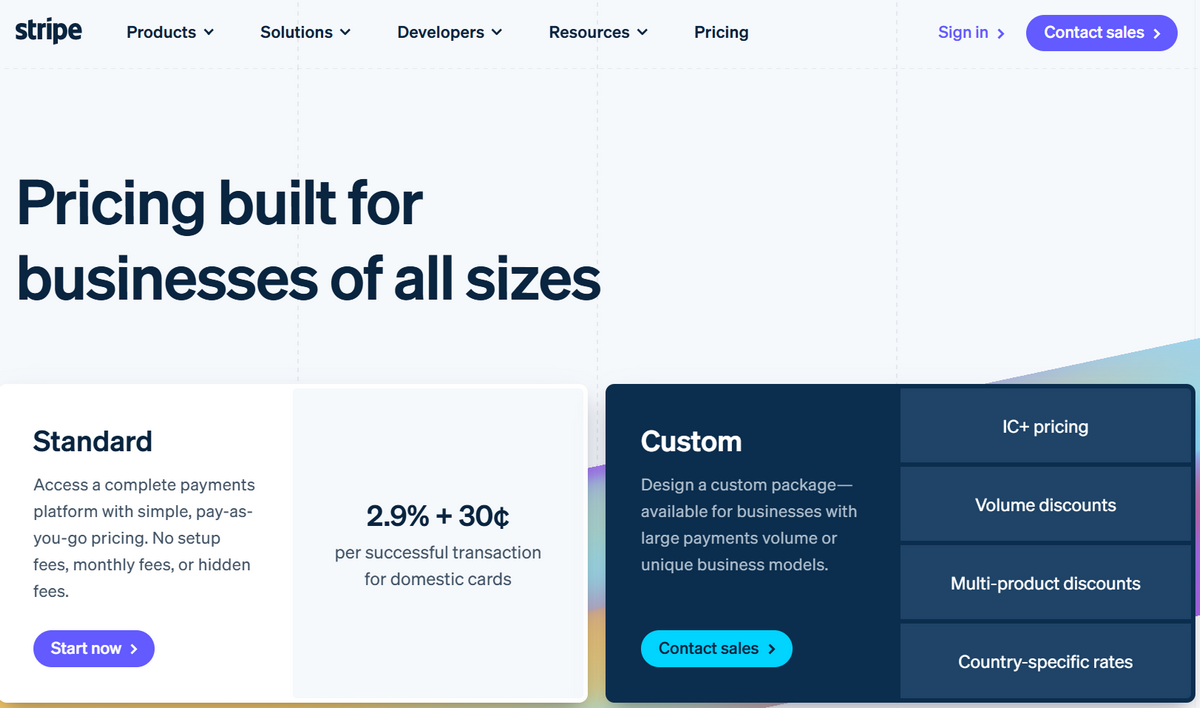
Every sale comes with its own deductions:
- Marketplace selling fees: eBay charges around 12.9% + $0.30 per order, Etsy takes 6.5% + listing fees.
- Payment gateways: Stripe and PayPal typically take 2.9% + $0.30 per transaction. International sales can add 1–2% extra.
- Chargebacks: If a customer disputes a payment, you can lose both the product cost and pay $15–20 in penalty fees.
These charges are small individually, but snowball when scaling. Keep in mind that you should track payment methods by conversion rates. Sometimes, PayPal fees look painful, but customers convert higher with them, so your margin can still win overall.
3. Shipping, Taxes & Customs
Shipping is that sneaky villain of dropshipping, the one quietly draining your profits while you’re busy chasing sales. Here’s why:
- Shipping fees: Costs vary wildly depending on supplier location. A $3 product from China might need $8 shipping, while a US-based supplier might ship the same product for $5.
- Customs duties: For international orders, countries like the UK and EU add VAT (20%+). The U.S. is now debating tariff changes (like the De Minimis loophole update), which could impact imports from China.
- Dropshipping Taxes: Platforms like Shopify automatically calculate sales tax for U.S. states, but you’re responsible for reporting and remitting.
📦 Supplier’s Tip: AutoDS allows access to private suppliers with US/EU warehouses, drastically reducing shipping costs and customs delays (and boosting conversion rates!). Go for that option and keep margins healthy.
4. Advertising Costs
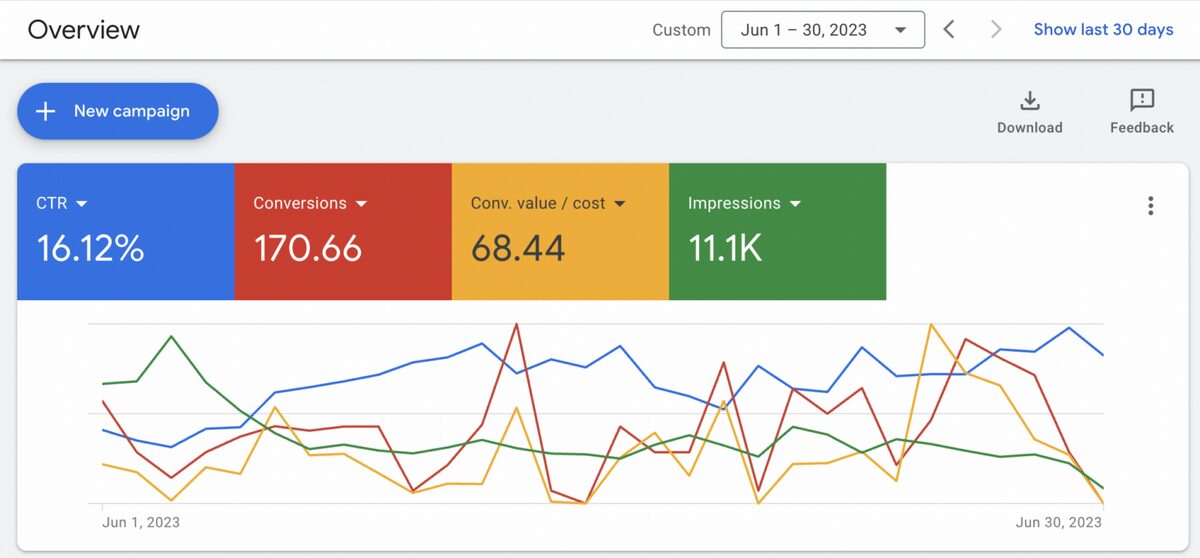
Ads are the rocket fuel of dropshipping—but they burn cash quickly:
- Facebook & Instagram Ads: CPMs (cost per 1,000 impressions) average $10–15 in 2025.
- TikTok Ads: Still cheaper, around $5–7 CPM, but competition is rising fast.
- Google Ads: CPCs (cost per click) for e-commerce keywords average $1.50–2.50.
If your ad spend per sale is higher than your margin, congrats, you just paid people to shop in your store. Ouch. AutoDS integrates with analytics dashboards, showing real-time product profit after ad spend so you can kill unprofitable campaigns before they drain your wallet.
👉 By understanding these costs, you’ll see why profit margin isn’t a simple number—it’s a full equation with moving parts. AutoDS simplifies this journey by pulling product price, shipping, fees, and ad spend into one dashboard, giving you the actual profit picture for every SKU you sell.
What Are the Key Differences in Pricing Structures?
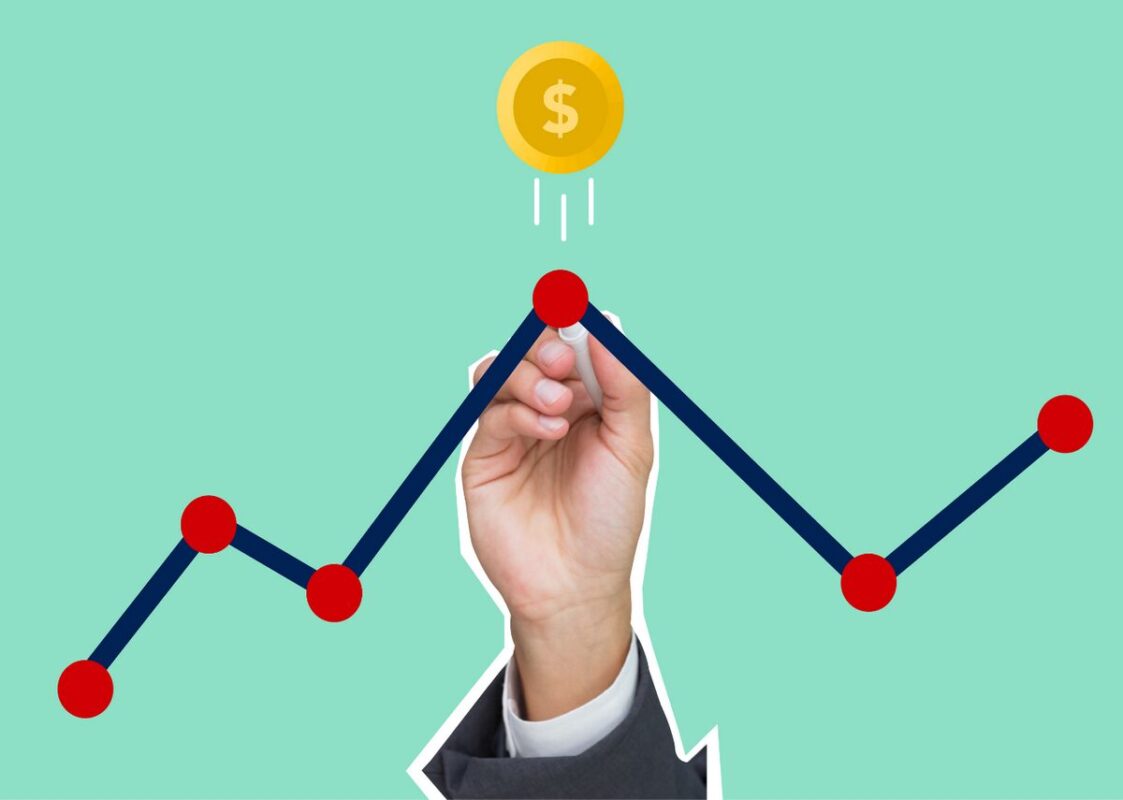
Choosing the right pricing structure is one of the biggest levers you have to protect your profit margins. Let’s review the three most common pricing models you’ll run into while dropshipping, along with their strengths and pitfalls.
Each of the following models has its place in dropshipping, but the real magic comes from combining them. Many successful sellers start with cost-plus as a baseline, use dynamic pricing to stay competitive, and sprinkle in value-based premiums where branding allows.
Cost-Plus (Fixed Markup) Pricing ➕
This is the simplest (and still the most popular) method of dropshipping. You take the product’s total landed cost (supplier price + shipping + duties) and add a fixed percentage as your markup.
For example, if a phone case costs you $5 all-in and you apply a 200% markup, you’d sell it for $15. The math is straightforward, and you always know your margin floor.
The downside? This method doesn’t account for competition or market demand. If every other seller is pricing at $9.99, your $15 case may struggle to sell, even if your markup is mathematically correct.
This method is great when starting out, but you should always check competitor prices so you don’t overprice yourself out of the market.
Dynamic Pricing (Market-Responsive) 📈
Dynamic pricing is where things get smarter. Instead of sticking to a fixed percentage, you adjust prices based on changing factors like supplier costs, competitor prices, or profit targets.
Let’s say your supplier suddenly increases the cost of that $5 phone case to $6. With static pricing, you’d lose $1 in margin unless you manually updated your store. With dynamic pricing, your selling price adjusts automatically to protect your profit margin.
This model is especially powerful in competitive niches where price wars are common. It ensures you remain competitive without bleeding cash.
AutoDS provides a full rule-based dynamic pricing system. You can set profit rules (like “always keep at least 20% margin” or “match lowest competitor up to X limit”), and AutoDS will automatically react to supplier cost changes in real time. That means you never wake up to products selling at a loss just because a supplier updated prices overnight.
Value-Based (Premium) Pricing 💰
Value-based pricing is all about what the product feels worth to the customer, not just what it costs you. Here, you set a premium markup if you believe your product positioning, branding, or niche demand justifies it.
Take the same $5 phone case. Instead of adding a fixed 200% markup, you might sell it for $29.99 if it’s branded as “eco-friendly,” “limited edition,” or bundled with exclusive features like a warranty. Customers pay for the perceived value, not just the item itself.
The beauty of this model is that your margins can skyrocket if you nail branding and customer trust. The risk? Overpricing without offering a unique angle leads to abandoned carts.
Value-based pricing pairs best with strong branding, storytelling, and great customer experience. Don’t just sell a product—sell the lifestyle or problem it solves.
🆕 Beginner’s Tip: Wondering how the psychology of pricing shapes buying decisions? Learn every trick of odd-even pricing psychology to boost your dropshipping sales.
Step-by-Step Profit Calculation Example
Let’s run through a realistic example so you can see how all those costs we just listed add up in practice. We’ll take a single order and calculate both gross profit margin and net profit margin using the formula.
Formula reminder:
Profit Margin = (Income – Expenses) ÷ Income × 100
Example: Selling a Wireless Charger | Selling price (customer pays): $49.99
Now let’s break down the expenses:
- Product Cost (Supplier): $15.00
This includes the base product price from your supplier.
- Shipping Cost: $5.00
If you’re using a U.S. supplier, shipping might be lower, but let’s say $5 flat here.
- Platform Fee: $2.50
Shopify’s transaction fee (2.9% + $0.30 per order).
- Ad Spend: $20.00
Average cost to acquire one sale on Facebook/Instagram.
- Monthly Setup Cost Allocation: $1.50
If your Shopify plan is $29/month and you expect ~25 sales monthly, each sale carries about $1.50 of that overhead.
Step 1️⃣: Add Up All Expenses
- Product: $15.00
- Shipping: $5.00
- Platform fee: $2.50
- Ads: $20.00
- Set up allocation: $1.50
- Total expenses = $44.00
Step 2️⃣: Subtract Expenses From Income
- Income (sale price): $49.99
- Expenses: $44.00
- Net profit = $5.99
Step 3️⃣: Apply the Formula
- ($49.99 – $44.00) ÷ $49.99 × 100 = 11.98% profit margin
So even though you’re making nearly $50 per sale, you’re actually keeping just under 12% after all costs.
Why This Matters
Sure, 12% sounds tiny, but multiply that by 500 orders, and you’ll suddenly get nearly $3,000. That’s rent, payroll, or a vacation fund right there. On the flip side, if ad costs creep up or your supplier increases shipping, that 12% could vanish quickly.
This is where automation helps: with AutoDS’ real-time profit monitoring, you can automate price adjustments when supplier costs rise or when your margin falls below your target. Instead of checking spreadsheets daily, you can set AutoDS to protect your margins automatically.
💡 Pro Tip: Always run numbers like this before scaling ads. Better to test on paper and know your break-even point than to spend $1,000 on ads only to find out you’re actually losing $2 per order.
What Are the Setup Fees and Monthly Costs?
Dropshipping isn’t truly “no-cost”. Even before you run ads, there are setup fees and monthly subscriptions to keep your store alive. Ignoring these can distort your profit margin calculations. Let’s break it down by platform and essential tools so you can see the real baseline of running a store.
Shopify Setup & Monthly Costs
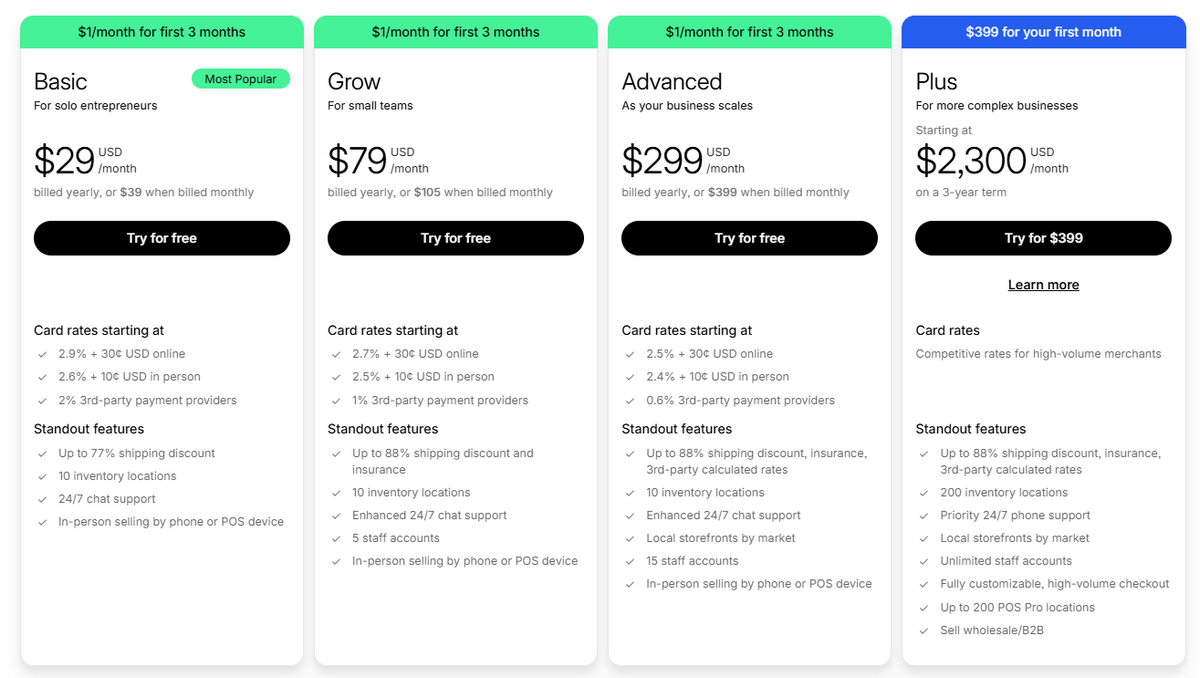
- Basic Plan: $29/month (best for beginners).
- Grow Plan: $79/month (for growing stores with reports).
- Advanced Plan: $299/month (large stores scaling internationally).
Add ~2.9% + $0.30 per transaction for Shopify Payments. While Shopify doesn’t charge listing fees, its monthly subscription is non-negotiable. Spread that across expected monthly sales to calculate your per-order overhead.
eBay Store Subscriptions
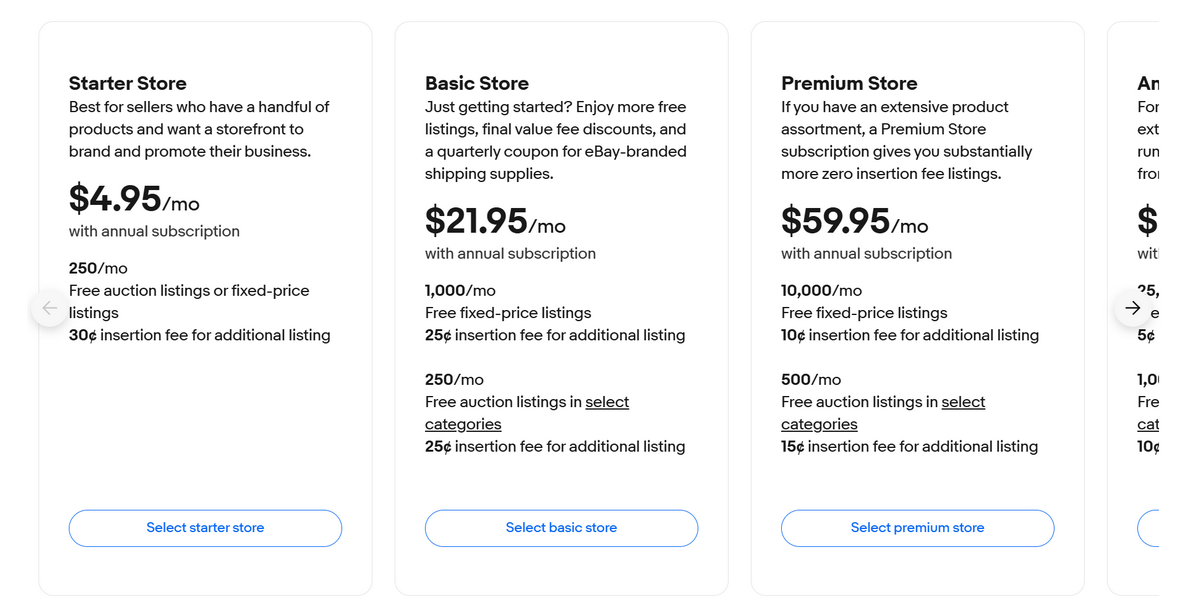
- Starter: $4.95/month (annual) — 250 fixed-price listings.
- Basic: $21.95/month — 1,000 listings.
- Premium: $59.95/month — 10,000 listings.
- Anchor: $299.95/month — 25,000 listings.
- Enterprise: $2999.95/month — 100,000 listings.
eBay also takes a cut of each sale: final value fees average 12.9% + $0.30 per order. International sales may add 1–2% more.
Amazon Seller Fees
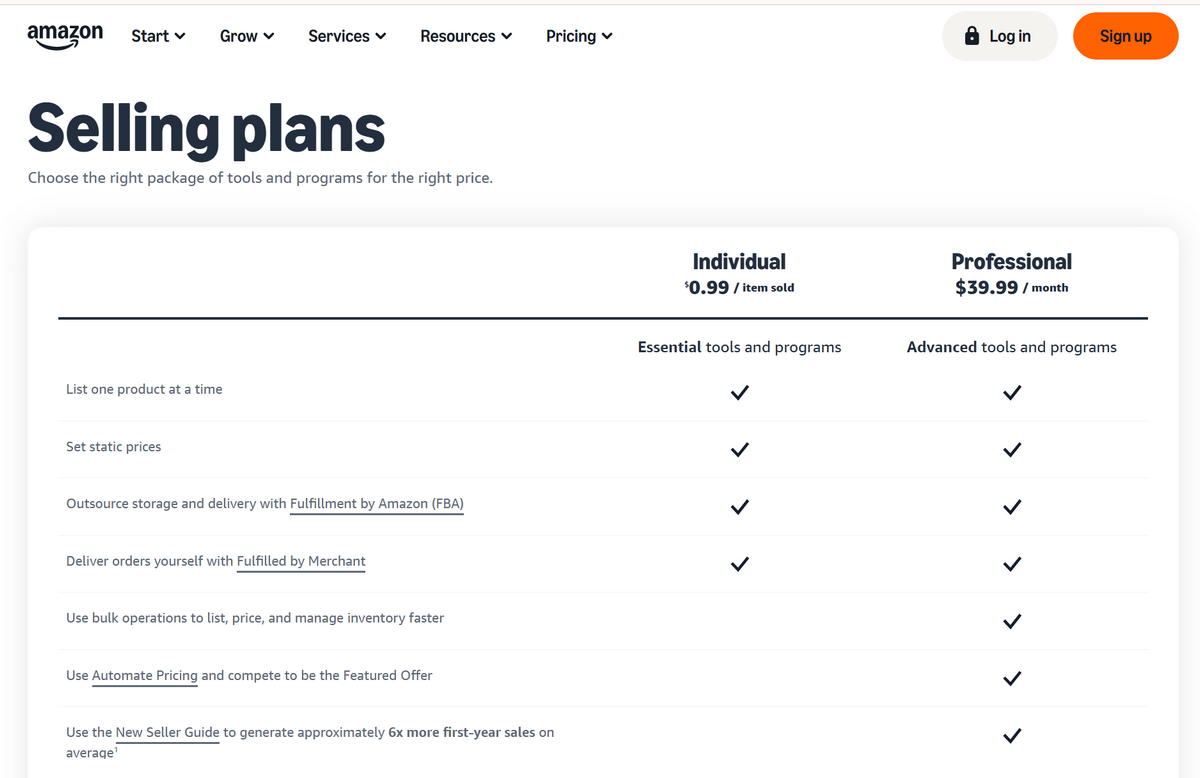
- Individual Plan: $0.99 per item sold.
- Professional Plan: $39.99/month (unlimited listings).
- Referral fees: Usually 8–15%, depending on category.
Amazon is attractive for volume sellers but has some of the highest commission rates in e-commerce.
Tool Costs: Automation & Marketing Stack
Beyond platform subscriptions, most dropshippers pay for tools to actually run their business:
- AutoDS: Starts at $19.90/month. Plans scale with order volume and include automation features like product importing, stock/price monitoring, and fulfillment.
- Email Marketing Tools (e.g., Klaviyo, Omnisend): $20–100/month depending on list size.
- Ad Platforms: Technically free to use, but you’ll pay directly for ad spend (often $500–$2,000/month for scaling stores).
Transparency is key: subscription fees may look small individually, but together they can eat 10–20% of monthly profits if ignored.
How AutoDS Helps You Optimize Margins
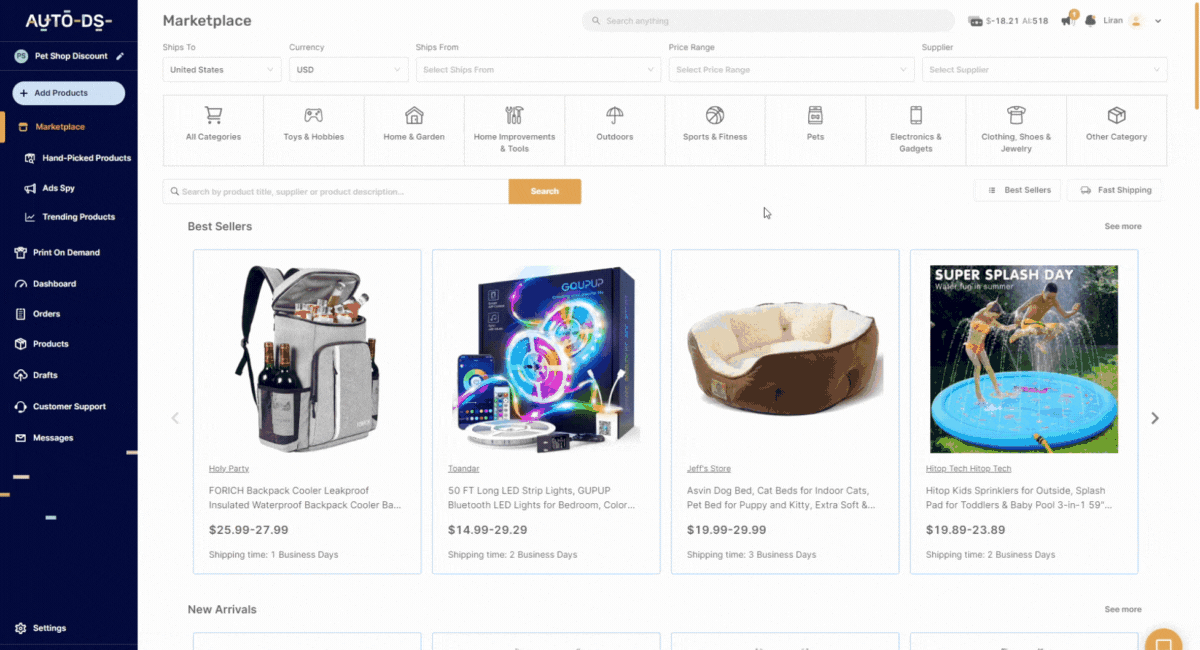
Let’s be real: manually tracking margins in dropshipping feels like juggling while blindfolded. Suppliers change prices overnight, platforms add hidden fees, and ad costs spike without warning. Miss just one update, and suddenly you’re selling at a loss. That’s why automation is margin insurance.
AutoDS has a full suite of tools built to protect your profits without you living inside a spreadsheet. Here’s how it works in practice:
1. Price & Stock Monitoring (Your 24/7 Guardrails)
Suppliers adjust prices daily, sometimes hourly. Imagine selling a $25 product only to find your supplier raised it to $30 overnight. Manual sellers eat the loss.
AutoDS tracks supplier catalogs in real time and updates your store automatically—both for stock availability and product costs. If an item goes out of stock with your supplier, it goes out of stock in your store before you get those angry “Where’s my order?” emails.
💡 Pro Tip: You can set AutoDS to raise or lower prices automatically when costs shift, so your margins don’t erode while you sleep.
2. Rule-Based Dynamic Pricing Logic
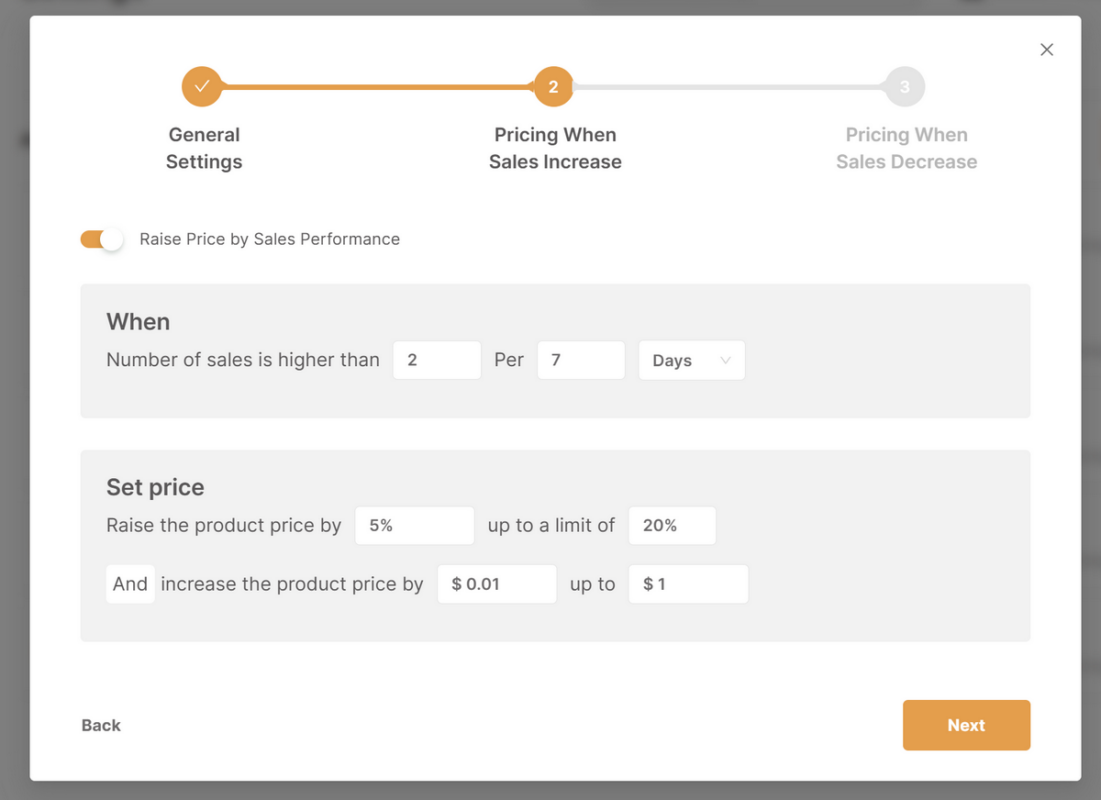
This isn’t just “set a markup and hope.” In AutoDS pricing settings, you can:
- Define a minimum profit per item (e.g., never sell below $5 profit).
- Set margin ranges (e.g., always keep 15–30%).
- Add multipliers for shipping or payment gateway fees.
The system recalculates your selling price every time supplier costs change. It’s like having a built-in CFO running your pricing department 24/7.
3. Built-In Formula Calculators
Here’s where it gets nerdy (but fun). AutoDS shows you exactly how the numbers are calculated:
Selling Price = (Product Cost + Shipping + Fees + Target Profit) × Markup Rule
Instead of guessing whether Shopify’s 2.9% fee or PayPal’s 3.49% fee is included, you can see it baked into the formula. The dashboard clearly breaks down:
- Supplier price
- Shipping costs
- Marketplace/transaction fees
- Target profit amount
No more napkin math or “what if I missed something” anxiety.
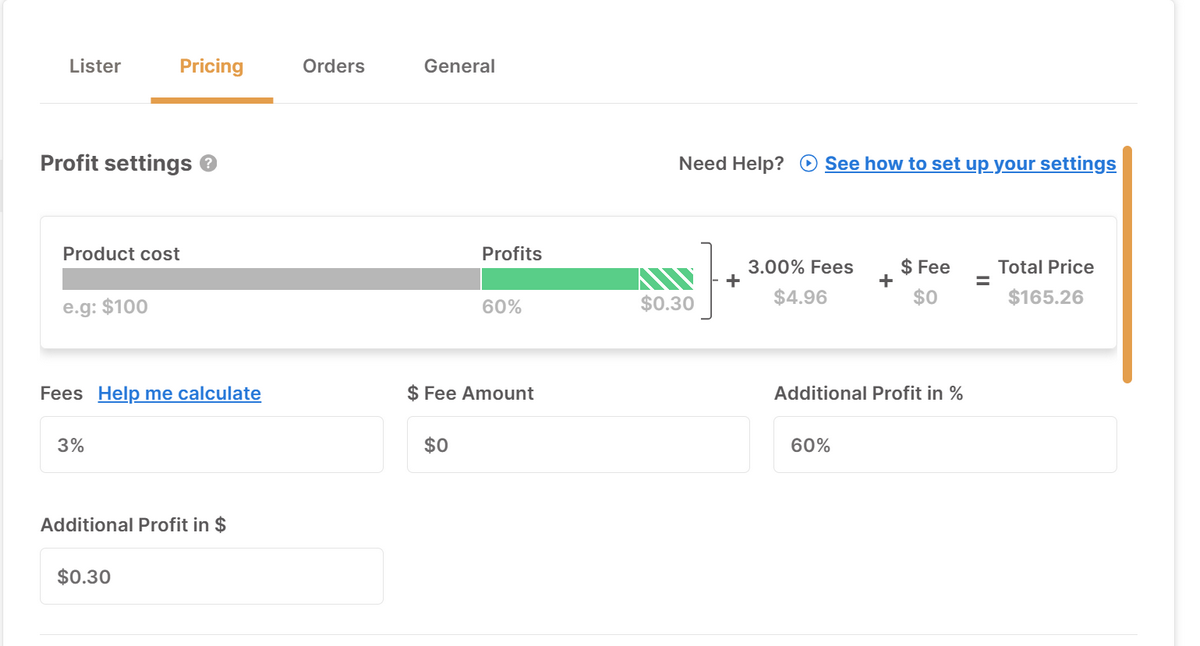
4. Handling Shipping & Taxes Without Confusion
Shipping and taxes are notorious margin killers because they’re often unpredictable. AutoDS solves this by letting you:
- Add estimated tax percentages to your formula so they’re always covered.
- Include shipping (flat or variable) in product pricing rules.
- Apply different pricing rules for domestic vs. international markets.
Example: If you sell in the UK and VAT is 20%, AutoDS can automatically add that buffer into your pricing formula so you’re never undercutting yourself.
5. Margin Visibility in Real Time
This is the part that dropshippers love most. AutoDS dashboards show:
- Profit per SKU
- Storewide margin averages
- Break-even points for ad campaigns
That means no waiting for monthly reports—you can decide today whether to kill an unprofitable product or double down on a winner.
👉 In short: AutoDS isn’t just automating busywork. It’s turning complex margin management into a live, transparent system where every cent is accounted for. And when margins are the heartbeat of your business, that transparency is what keeps your store alive and scaling.
Frequently Asked Questions
What are the key differences in pricing structures?
Dropshipping pricing structures usually fall into three models: cost-plus (fixed markup), where you add a set percentage over product cost; dynamic pricing, where prices adjust automatically based on supplier cost changes or competitor activity; and value-based pricing, where customers pay a premium for perceived value or branding.
What are the setup fees and monthly costs for dropshipping?
Most platforms have subscription and transaction costs: Shopify starts at $29/month, eBay store subscriptions range from $4.95 to $299.95/month, and Amazon charges $39.99/month for its professional plan plus referral fees of 8–15%. On top of that, automation and marketing tools add $20–100/month. AutoDS provides automation from $19.90/month, helping sellers see all setup and recurring costs clearly in one dashboard.
How do I accurately calculate my dropshipping profit margin?
Use the formula: Profit Margin = (Income – Expenses) ÷ Income × 100. Include all expenses: product cost, shipping, ads, platform fees, payment charges, and even a portion of monthly subscriptions. For example, a $50 sale with $44 in total costs leaves $6 profit, which is a 12% profit margin.
What is a good dropshipping profit margin?
On average, most dropshippers aim for 10–30% net profit margins. Lower than 10% makes scaling risky, while higher than 30% often requires strong branding or value-based pricing strategies. AutoDS has a transparent profit tracking feature so sellers can see whether their margins meet targets or need adjustment.
Can automation tools help improve margins?
Yes, automation protects margins by eliminating human error and reacting instantly to cost changes. AutoDS ensures real-time stock and price monitoring, rule-based dynamic pricing, and profit dashboards that include shipping, taxes, and fees. This means dropshippers spend less time recalculating and more time optimizing growth.
Start Your Dropshipping Journey with AutoDS
Here’s the truth: profit margins are your dropshipping heartbeat. Ignore them, and your store flatlines; track them, and your business stays alive and scaling. You can have trending products and flashy ads, but if you don’t know your true margins, you’re building on shaky ground. The good news? You don’t have to do it all manually.
AutoDS offers an all-in-one automation system that calculates, protects, and optimizes your real-time profit margins. From dynamic pricing rules to transparent dashboards that show every fee and expense, AutoDS ensures you scale with clarity instead of guesswork.
If you’re ready to take the next step, check out these guides to sharpen your strategy:
- TikTok Dropshipping In 2025 – Full Guide & Best Products
- AI Store Builder: Create a Dropshipping Store in Minutes
- AliExpress To Shopify Dropshipping: The Complete Guide
👉 Whether you’re just starting out or already running a store, AutoDS makes profit tracking and optimization effortless, so you can focus on scaling your business instead of babysitting spreadsheets.
Start your $1 AutoDS trial today and give your margins the protection they deserve.






